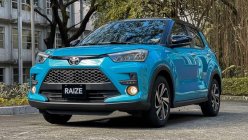In this article...
- Why compare these two?
- Exterior
- Interior
- Engine & Performance
- Safety
- Price
- Conclusion
Toyota Raize vs Toyota Rush: Why compare these two?
By now, most of you already know that Toyota Motor Philippines has a new subcompact crossover added to its model lineup. This is of course the Toyota Raize, a five-seater model made by Daihatsu.
2022 Toyota Raize: It's finally here! - Philkotse Quick Look
Some people however, can’t help but compare it against other existing Toyota models. So how does the Toyota Raize weigh up against the Toyota Rush in terms of specs?
While this is an out-of-the-box comparison, do note the price of the top-spec Raize 1.0 Turbo is quite close to the mid-spec Rush E 1.5 AT. Specifically, the top-spec Raize is priced at Php 1,031,000, while the Rush E can be had for Php 1,023,000. That’s a mere Php 8,000 difference.
Toyota Raize vs Toyota Rush: Exterior
When it comes to size, there’s no doubt that the Toyota Raize is the smaller vehicle. That’s because it has a length of 4,030mm, a width of 1,710mm, and a height of 1,605mm.
Compare that to the Toyota Rush, which comes with MPV dimensions. It has a length of 4,435mm, a width of 1,695mm, and a height of 1,705mm.
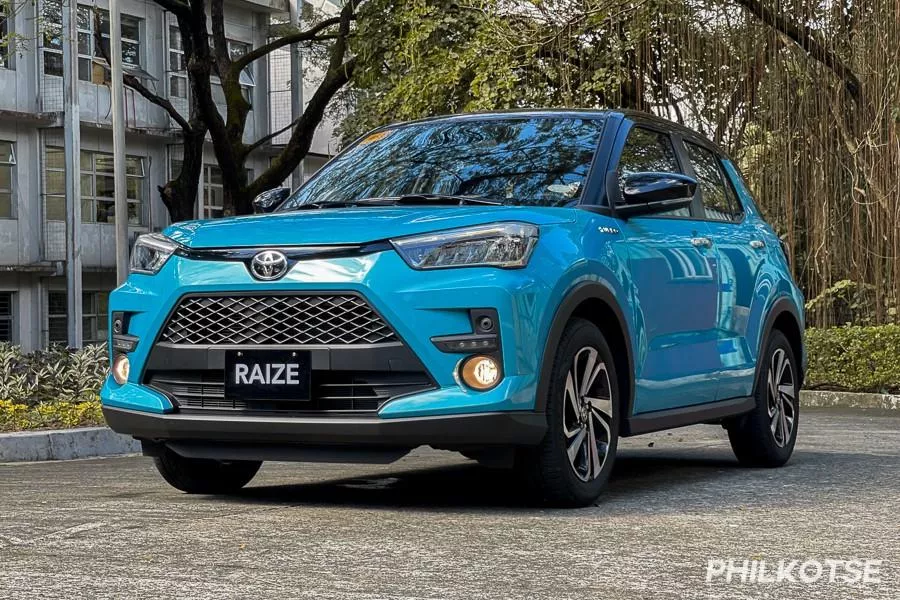
The Toyota Rush 1.0 Turbo CVT
Interestingly enough though, the Rush is actually narrower than the Raize. Furthermore, the Rush has a longer wheelbase at 2,685mm compared to the Raize’s 2,525mm. It also has more ground clearance at 220mm, compared to the subcompact crossover’s 200mm of ground clearance.
|
Toyota Raize 1.0 Turbo CVT |
Dimensions |
Toyota Rush E 1.5 AT |
|
4,030mm |
Length |
4,435mm |
|
1,710mm |
Width |
1,695mm |
|
1,605mm |
Height |
1,705mm |
|
2,525mm |
Wheelbase |
2,685mm |
|
200mm |
Ground Clearance |
220mm |
When it comes to exterior equipment, both the top-spec Toyota Raize and the mid-spec Toyota Rush come standard with LED headlamps, LED taillights, and front fog lamps. The Raize 1.0 Turbo however, does have power-folding mirrors, which the Rush E variant lacks.
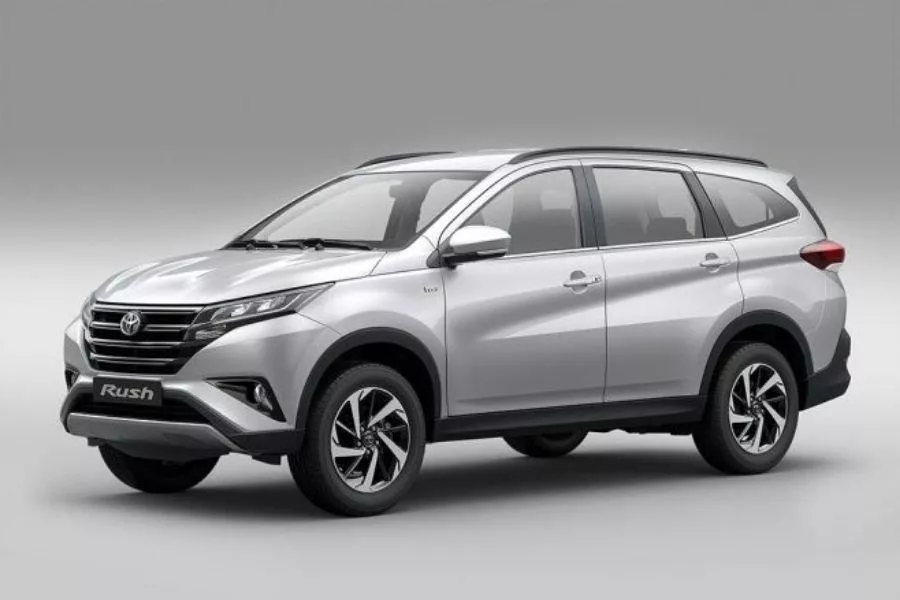
The Toyota Rush
In turn, the Rush rides on a smaller set of 16-inch alloy wheels. Meanwhile, the Raize 1.0 Turbo gets a set of 17-inch alloy wheels.
|
Toyota Raize 1.0 Turbo CVT |
Exterior equipment |
Toyota Rush E 1.5 AT |
|
LED |
Headlamps |
LED |
|
Halogen |
Turn signal lamps |
Halogen |
|
LED |
Taillights |
LED |
|
With |
Front fog lamps |
With |
|
17-inch |
Wheel size |
16-inch |
|
Alloy |
Wheel type |
Alloy |
Toyota Raize vs Toyota Rush: Interior
Inside, the Toyota Raize can seat five, whereas the Toyota Rush can seat up to seven. Both do come standard with manually adjustable front seats. The ones on the Raize though, are clad in a combination of synthetic leather and fabric, while the Rush’s seats are fabric only.
|
Toyota Raize 1.0 Turbo CVT |
Interior Equipment |
Toyota Rush E 1.5 AT |
|
Synthetic leather/fabric |
Seat Material |
Fabric |
|
Manual |
Driver’s seat adjustment |
Manual |
|
Tilt |
Steering wheel adjustment |
Tilt and Telescopic |
|
Automatic |
Air-conditioning type |
Manual w/ rear vents |
|
5 |
Seating capacity |
7 |
The Raize also gets a push-to-start button, a digital gauge cluster, automatic air-conditioning, and a leather-wrapped steering wheel. Meanwhile, the Rush E comes with a turnkey ignition system, manual air-conditioning, an analog gauge cluster, and a urethane steering wheel.
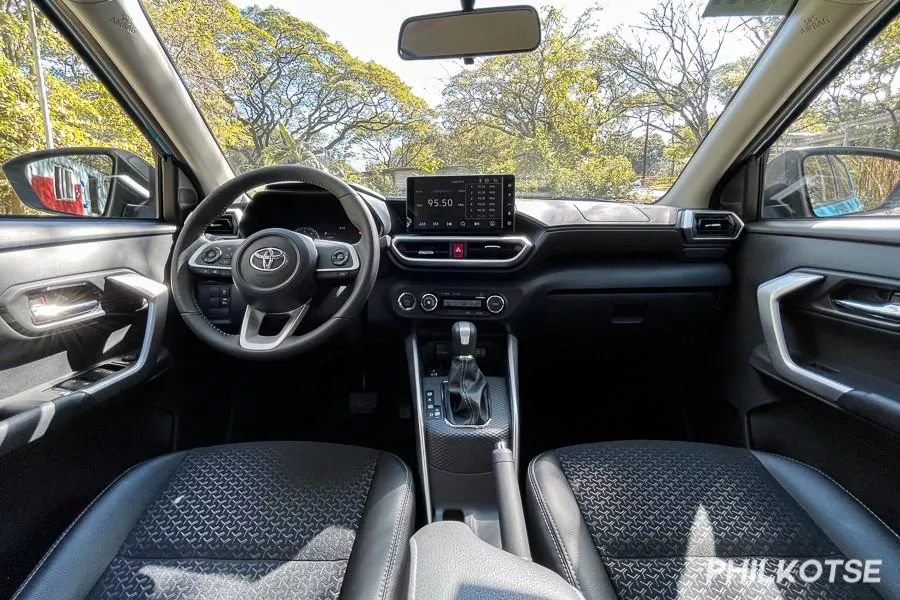
Inside the top-spec Toyota Raize
The Rush does come with a tilt and telescopic steering column while the Raize a tilt-only steering column. The larger vehicle also comes with rear AC vents which are not present on the Raize.
For on-board entertainment systems, the Raize 1.0 Turbo gets a nine-inch touchscreen headunit with Apple CarPlay, Android Auto, Bluetooth, and USB connectivity.
In comparison, the Rush E gets a smaller seven-inch headunit that instead uses a proprietary smartphone mirroring software. Like the one on the Raize though, it still has Bluetooth and USB connectivity.
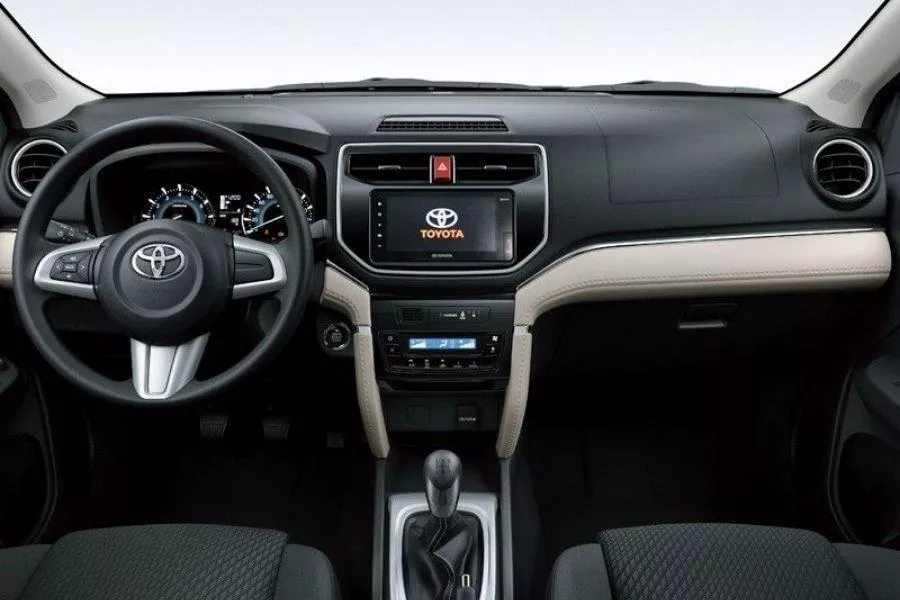
The Toyota Rush's cockpit
Of note, both headunits are then linked to a six-piece speaker system.
|
Toyota Raize 1.0 Turbo CVT |
On-board tech |
Toyota Rush E 1.5 AT |
|
9-inch touchscreen |
Infotainment system |
7-inch touchscreen |
|
Apple CarPlay, Android Auto, Bluetooth, USB |
Connectivity options |
Other smartphone mirroring, Bluetooth, USB |
|
6 |
# of speakers |
6 |
|
With |
Power-folding side mirror |
None |
Toyota Raize vs Toyota Rush: Engine & Performance
Under the hood, the top-spec Raize uses a 1.0-liter inline-3 turbocharged gasoline engine. This engine can then produce up to 97 horsepower and 140 Nm. It is paired with a continuously variable transmission (CVT) with paddle shifters for its manual model. Power is then sent to its front wheels.
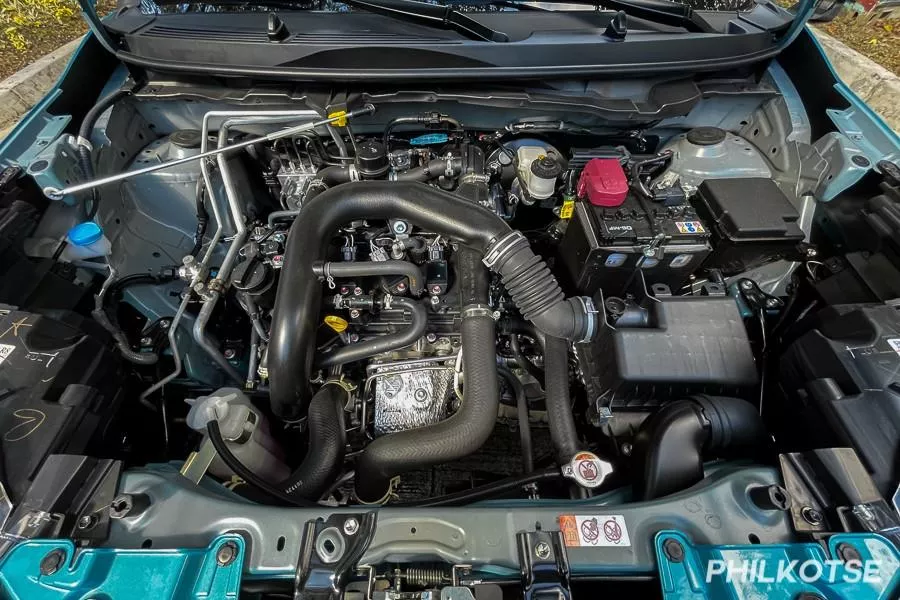
The Raize's 1.0-liter turbocharged inline-3 gasoline engine
In turn, the Toyota Rush E uses a naturally-aspirated 1.5-liter inline-4 capable of making 102 horsepower and 134 Nm of torque. Instead of a CVT, it uses a four-speed automatic gearbox, which sends power to its rear wheels.
So while smaller, the Raize’s three-banger actually makes more torque compared to the Rush’s 1.5-liter inline-4. That said, the Rush can still make a bit more horsepower, though the difference of five horsepower is marginal at best.
The Raize is built on a fully monocoque chassis. The Rush meanwhile uses a unique chassis which is a combination of a unibody frame and a body-on-frame chassis. To this end, the Rush is more of an SUV compared to the Raize crossover.

The Rush's 1.5-liter inline-4 gasoline engine
And while both use a MacPherson strut front suspension, the Raize uses a rear torsion beam while the Rush uses a 5-link axle type rear suspension.
For braking, the Raize gets a front disc brake and a rear drum brake. In turn, the Rush comes with disc brakes all around.
|
Specs |
Toyota Raize 1.0 Turbo CVT |
Toyota Rush E 1.5 AT |
|
Engine |
Inline-3 turbocharged gasoline |
Inline-4 gasoline |
|
Displacement |
1.0-liters |
1.5-liters |
|
Transmission |
CVT |
4-speed AT |
|
Horsepower |
97 horsepower |
102 horsepower |
|
Torque |
140 Nm |
134 Nm |
|
Drivetrain |
FWD |
RWD |
Toyota Raize vs Toyota Rush: Safety
For safety, both models come standard with anti-lock braking with electronic brake-force distribution. Both also have stability control, ISOFIX child seat anchors, rear-view camera, rear parking sensors, and hill-start assist.
The Raize does have blind-spot detection and rear-cross traffic alert, both of which are unavailable on the Toyota Rush.
On the flipside, the Rush gets more airbags numbering at seven, while the Raize only gets six.
|
Toyota Raize 1.0 Turbo CVT |
Safety equipment |
Toyota Rush E 1.5 AT |
|
6 |
Airbags |
7 |
|
With |
Anti-lock braking w/ EBD |
With |
|
With |
Reverse camera |
With |
|
With |
Hill-start assist |
With |
|
With |
Stability control |
With |
|
With |
ISOFIX |
With |
|
With |
Blind-spot detection |
None |
|
With |
Engine immobilizer |
With |
|
With |
Security Alarm |
With |
Toyota Raize vs Toyota Rush: Price
|
Toyota Raize Variants |
Price |
|
Raize E. 1.2 MT |
Php 746,000 |
|
Raize E 1.2 CVT |
Php 816,000 |
|
Raize G 1.2 CVT |
Php 906,000 |
|
Raize 1.0 Turbo CVT |
Php 1,031,000 |
|
Raize 1.0 Turbo CVT (White Pearl) |
Php 1,036,000 |
|
Toyota Rush Variants |
Price |
|
Rush E 1.5 MT |
Php 983,000 |
|
Rush E 1.5 AT |
Php 1,023,000 |
|
Rush G 1.5 AT |
Php 1,100,000 |
>>> You also see more: price of second hand Toyota Rush in the Philippines
Toyota Raize vs Toyota Rush: Conclusion
Comparing the Toyota Raize vs the Toyota Rush is like comparing apples and oranges. That’s because they serve vastly different purposes in the context of the Philippine automotive market.
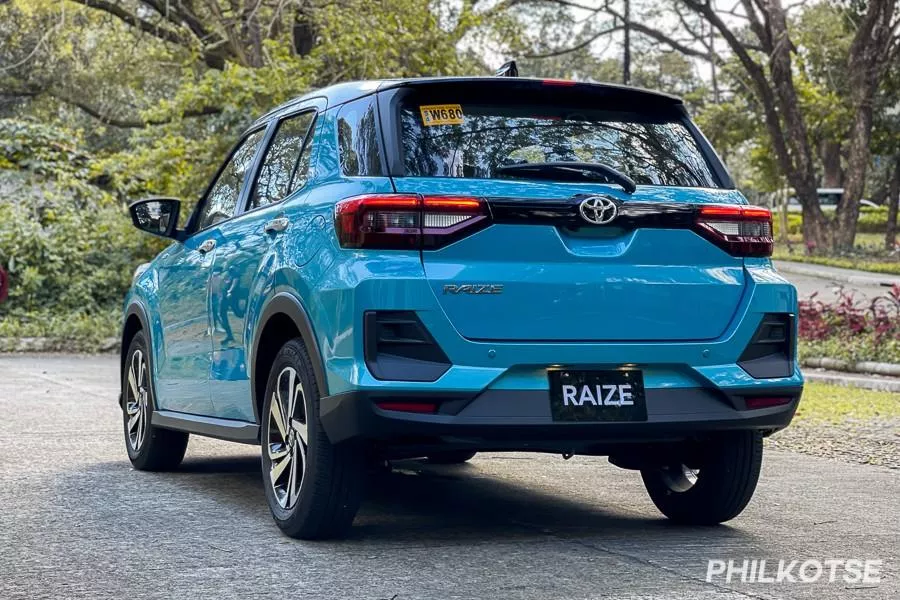
The Toyota Raize 1.0 Turbo from the rear
Then again, some buyers might want to go for the Rush E instead of the Raize 1.0 Turbo to “get their money’s worth.” Because you know, it can seat more. Some with kids might also turn to the Rush because it might be “a car they can grow into”.

The Toyota Rush from the rear
Do note though that the top-spec Raize does offer more tech compared to the older Rush. It is also more compact and easier to maneuver around tight urban streets.
For more car comparisons like this, keep it here on Philkotse.
Recent posts
- Toyota Raize philippines launch Mar 23, 2022
- toyota rush gets gr treatment Aug 10, 2021
- Meet the Toyota Raize: An exciting compact crossover we hope would come to the Philippines Mar 04, 2022









